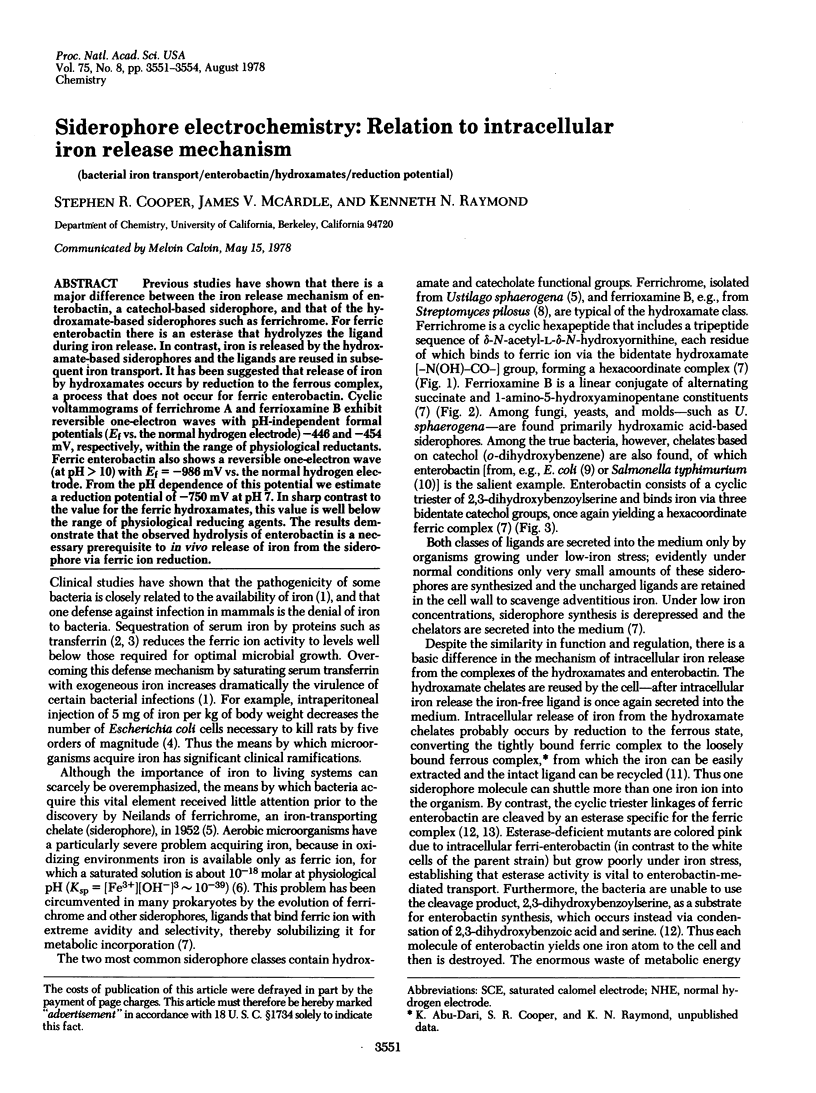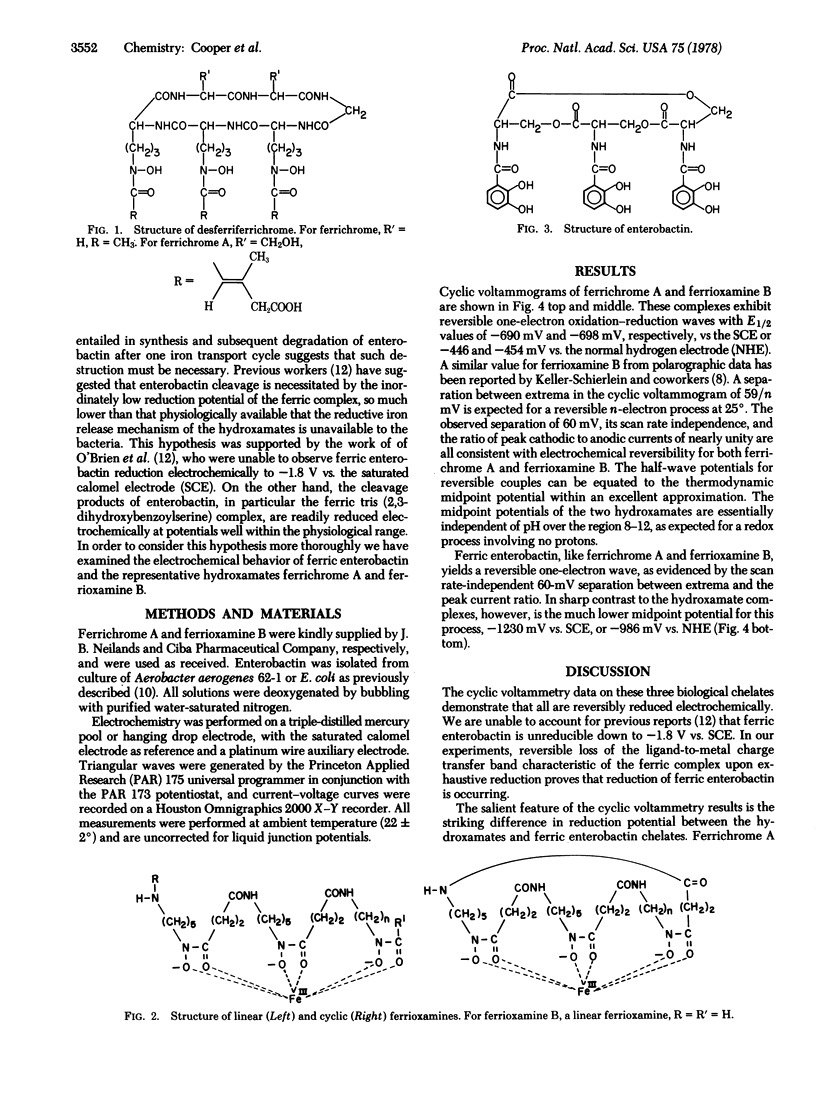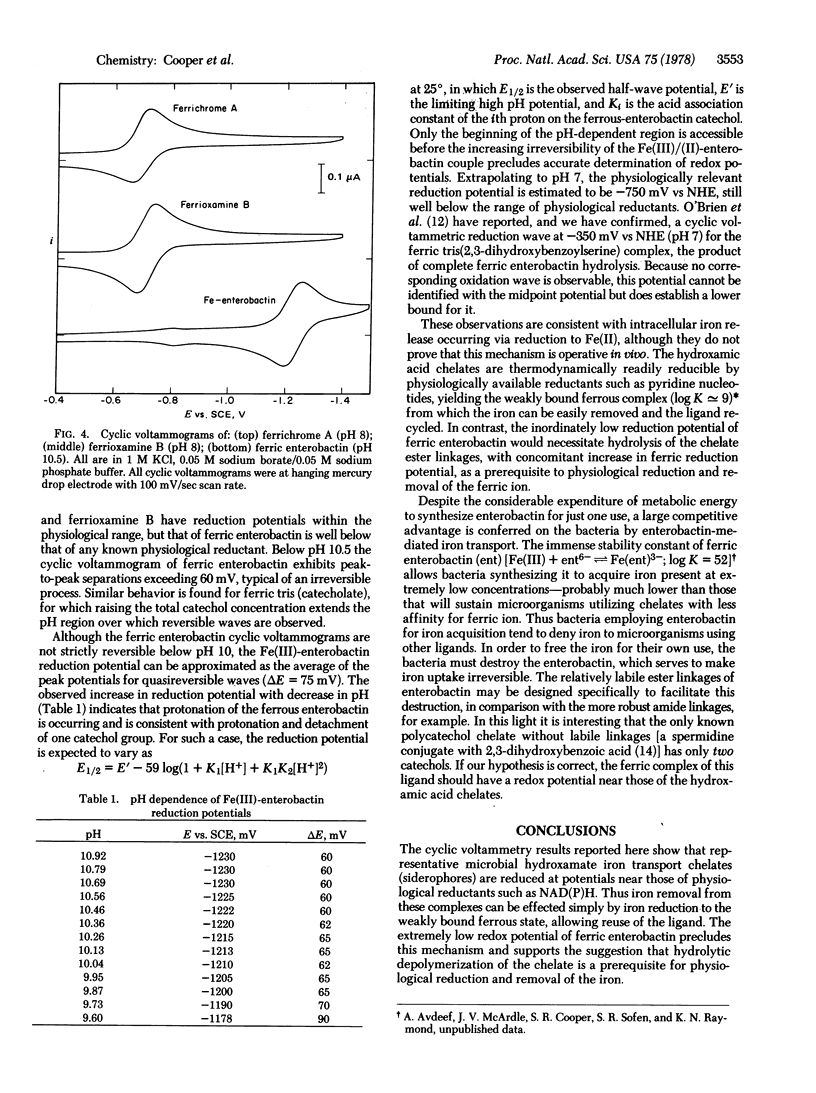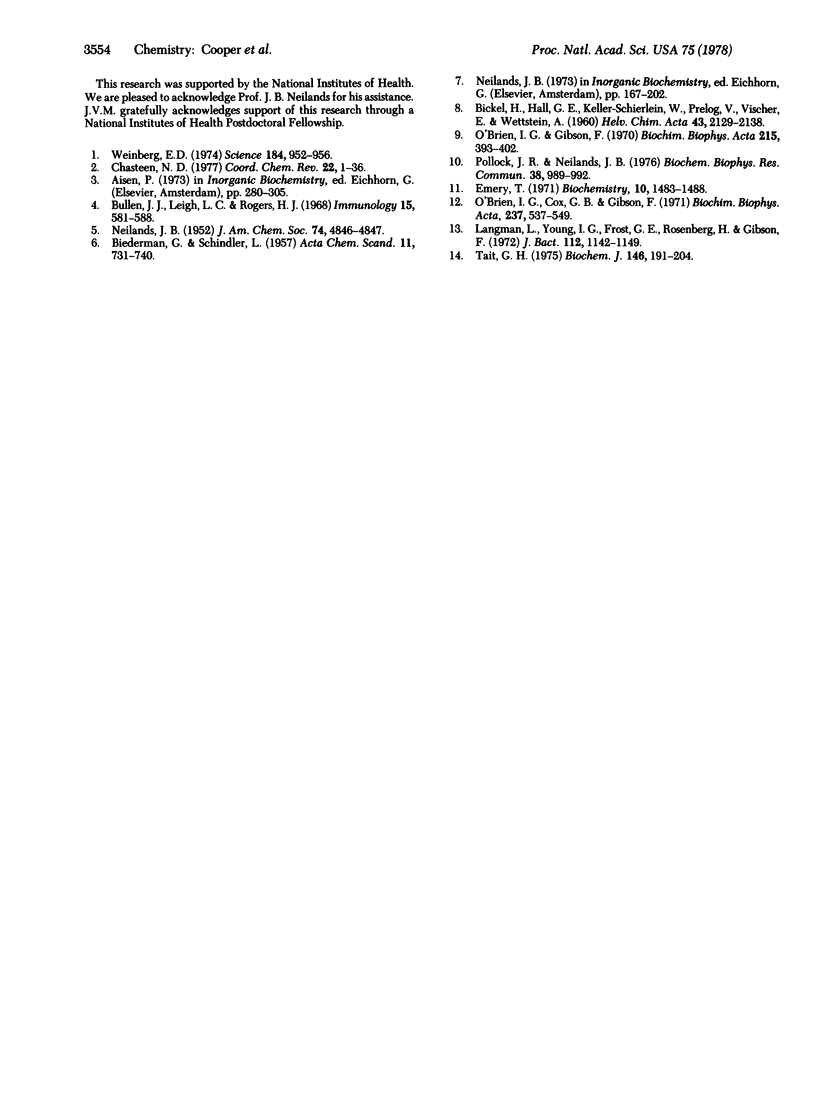Abstract
Previous studies have shown that there is a major difference between the iron release mechanism of enterobactin, a catechol-based siderophore, and that of the hydroxamate-based siderophores such as ferrichrome. For ferric enterobactin there is an esterase that hydrolyzes the ligand during iron release. In contrast, iron is released by the hydroxamate-based siderophores and the ligands are reused in subsequent iron transport. It has been suggested that release of iron by hydroxamates occurs by reduction to the ferrous complex, a process that does not occur for ferric enterobactin. Cyclic voltammograms of ferrichrome A and ferrioxamine B exhibit reversible one-electron waves with pH-independent formal potentials (Ef-vs. the normal hydrogen electrode) -446 and -454 mV, respectively, within the range of physiological reductants. Ferric enterobactin also shows a reversible one-electron wave (at pH greater than 10) with Ef = -986 mV vs. the normal hydrogen electrode. From the pH dependence of this potential we estimate a reduction potential of -750 mV at pH 7. In sharp contrast to the value for the ferric hydroxamates, this value is well below the range of physiological reducing agents. The results demonstrate that the observed hydrolysis of enterobactin is a necessary prerequisite to in vivo release of iron from the siderophore via ferric ion reduction.
Full text
PDF



Selected References
These references are in PubMed. This may not be the complete list of references from this article.
- Bullen J. J., Leigh L. C., Rogers H. J. The effect of iron compounds on the virulence of Escherichia coli for guinea-pigs. Immunology. 1968 Oct;15(4):581–588. [PMC free article] [PubMed] [Google Scholar]
- Emery T. Role of ferrichrome as a ferric ionophore in Ustilago sphaerogena. Biochemistry. 1971 Apr 13;10(8):1483–1488. doi: 10.1021/bi00784a033. [DOI] [PubMed] [Google Scholar]
- Langman L., Young I. G., Frost G. E., Rosenberg H., Gibson F. Enterochelin system of iron transport in Escherichia coli: mutations affecting ferric-enterochelin esterase. J Bacteriol. 1972 Dec;112(3):1142–1149. doi: 10.1128/jb.112.3.1142-1149.1972. [DOI] [PMC free article] [PubMed] [Google Scholar]
- O'Brien I. G., Cox G. B., Gibson F. Enterochelin hydrolysis and iron metabolism in Escherichia coli. Biochim Biophys Acta. 1971 Jun 22;237(3):537–549. doi: 10.1016/0304-4165(71)90274-1. [DOI] [PubMed] [Google Scholar]
- O'Brien I. G., Gibson F. The structure of enterochelin and related 2,3-dihydroxy-N-benzoylserine conjugates from Escherichia coli. Biochim Biophys Acta. 1970 Aug 14;215(2):393–402. doi: 10.1016/0304-4165(70)90038-3. [DOI] [PubMed] [Google Scholar]
- Pollack J. R., Neilands J. B. Enterobactin, an iron transport compound from Salmonella typhimurium. Biochem Biophys Res Commun. 1970 Mar 12;38(5):989–992. doi: 10.1016/0006-291x(70)90819-3. [DOI] [PubMed] [Google Scholar]
- Tait G. H. The identification and biosynthesis of siderochromes formed by Micrococcus denitrificans. Biochem J. 1975 Jan;146(1):191–204. doi: 10.1042/bj1460191. [DOI] [PMC free article] [PubMed] [Google Scholar]
- Weinberg E. D. Iron and susceptibility to infectious disease. Science. 1974 May 31;184(4140):952–956. doi: 10.1126/science.184.4140.952. [DOI] [PubMed] [Google Scholar]


